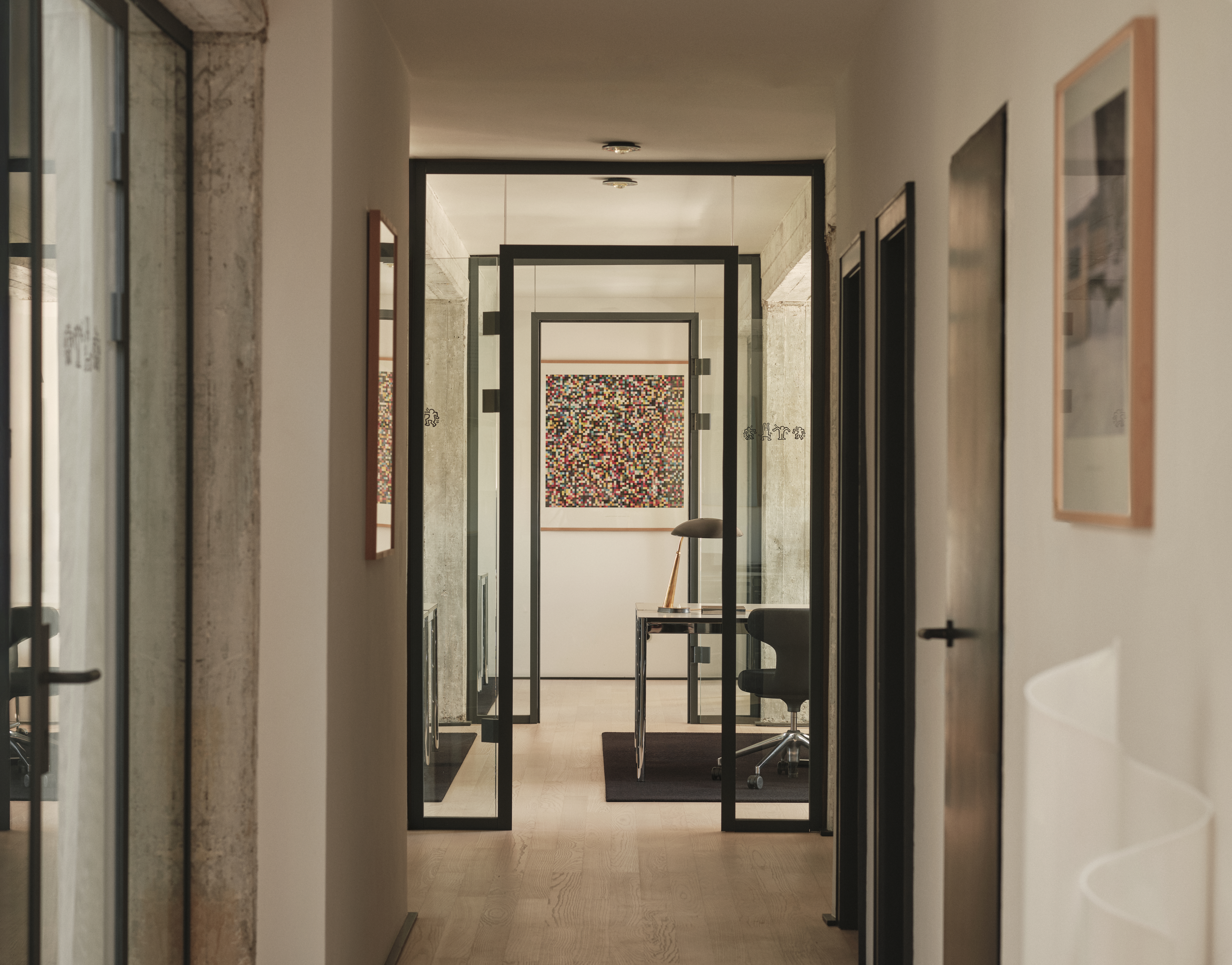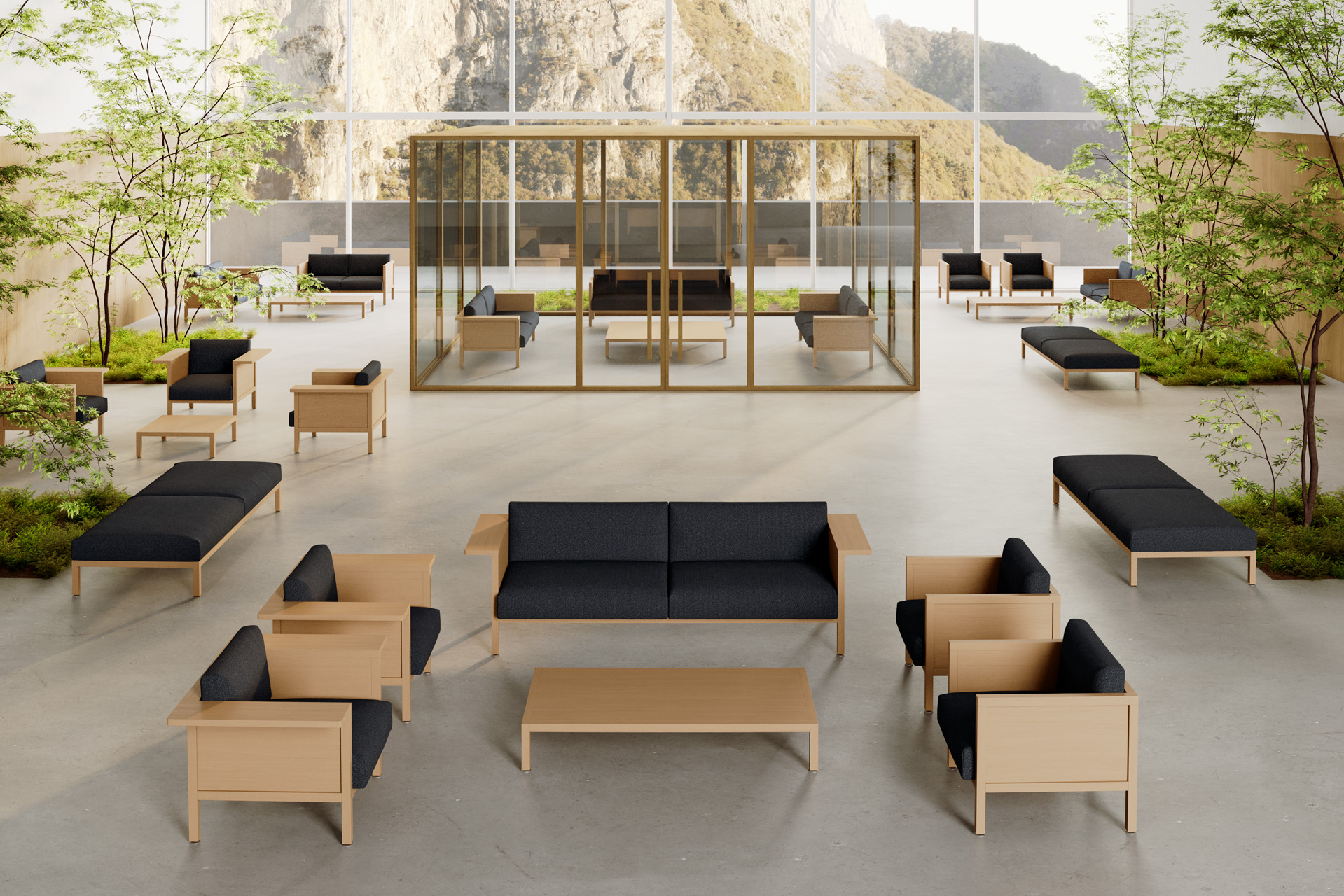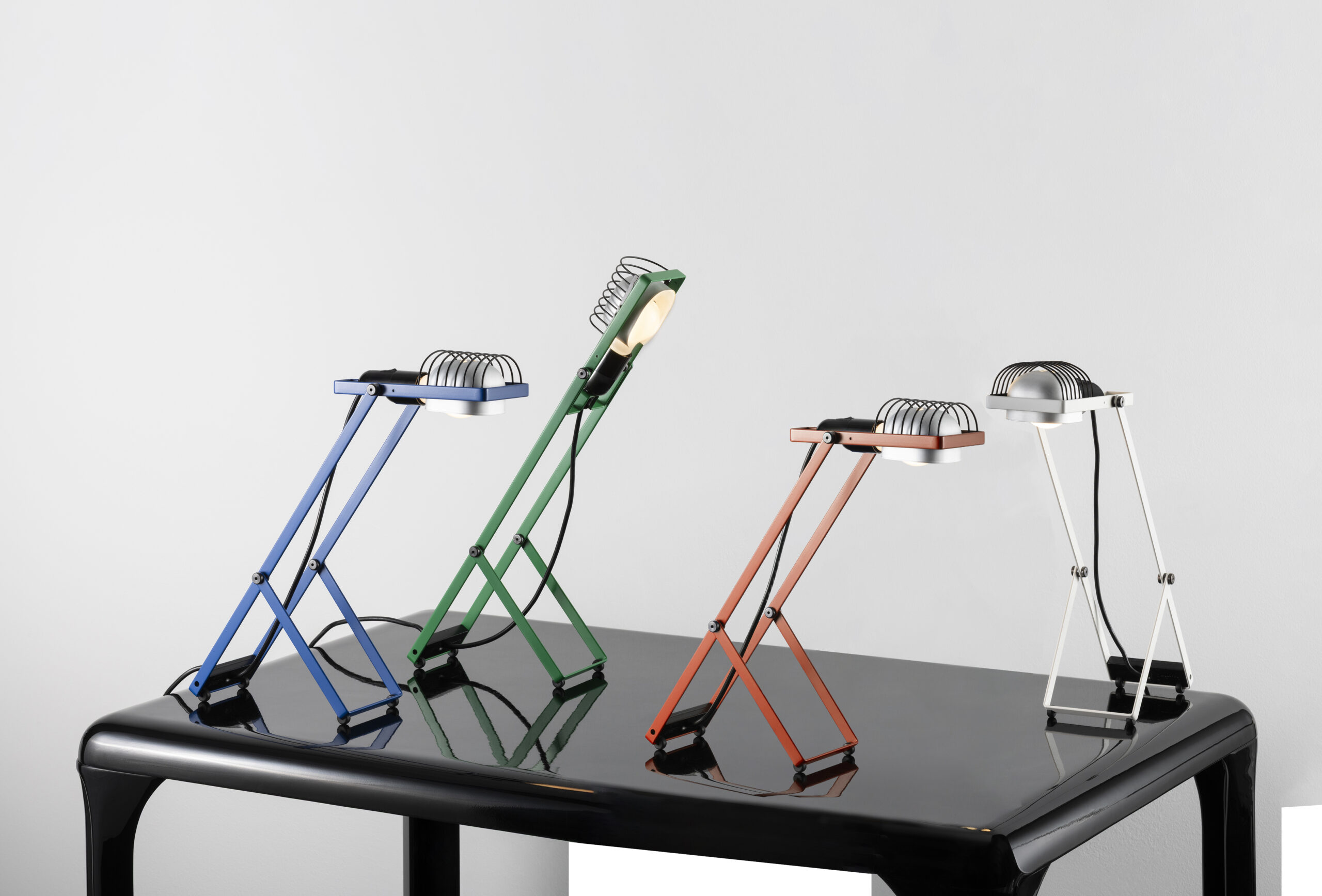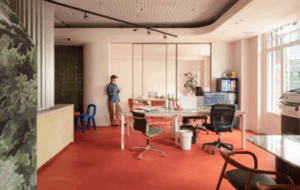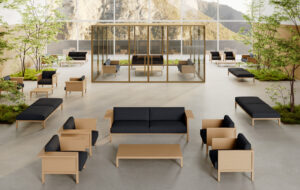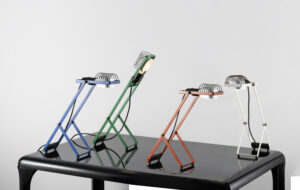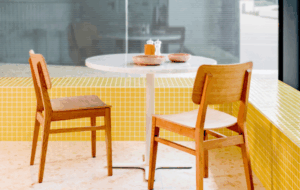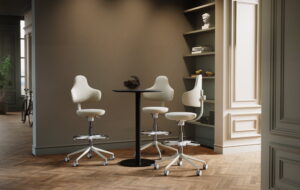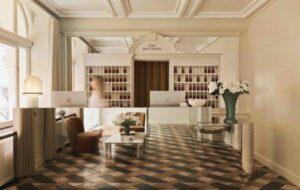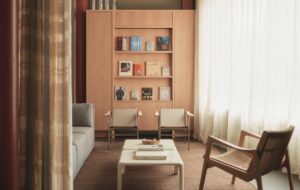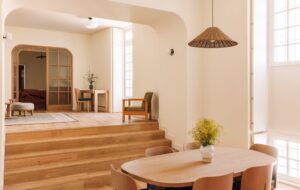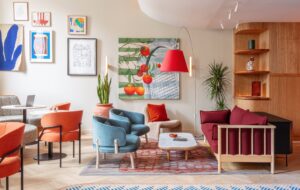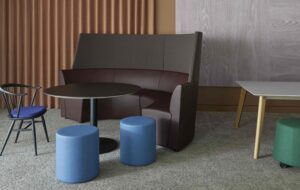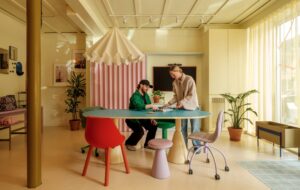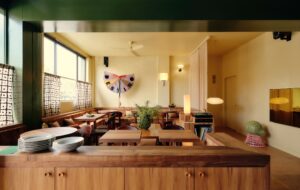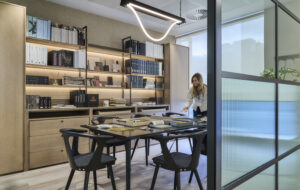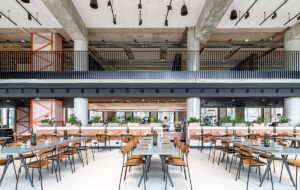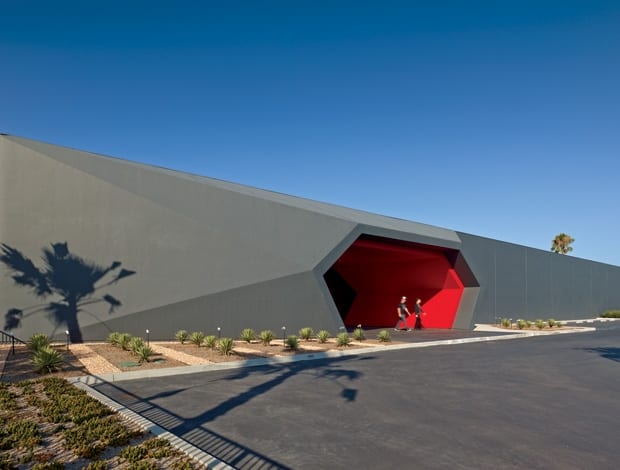 Fox Head HQ blood-red entrance, inspired by a motocross helmet|Steel slats wrap around the interior and frame the entrance|Fox Head’s red branding reaches intense heights in a meeting room|The warehouse is broken up by a mezzanine and larger breakout areas|The building’s Main Street, complete with shop fronts and indoor greenery|The glazed rear overlooks landscaping – and a motocross track, of course||
Fox Head HQ blood-red entrance, inspired by a motocross helmet|Steel slats wrap around the interior and frame the entrance|Fox Head’s red branding reaches intense heights in a meeting room|The warehouse is broken up by a mezzanine and larger breakout areas|The building’s Main Street, complete with shop fronts and indoor greenery|The glazed rear overlooks landscaping – and a motocross track, of course||
In Irvine, California, crouches a matt grey monolith. Ingress is through a gaping red orifice whose shaped was inspired by a motocross helmet. California, land of the giant drive-through doughnut, has produced a classier incarnation of novelty giantism thanks to Clive Wilkinson Architects.
Resident here is extreme sports apparel company Fox Head. Having become familiar with the brand while designing its new HQ, Wilkinson easily plucks from the air some choice adjectives to describe the Fox Head style: “Edgy, streetwise, urban, gritty, athletic,” he lists. “It’s very rock ’n’ roll – very alternative California.”
Riding custom motorbikes over dirt hills represents what Wilkinson calls “a hot subculture” on the west coast. This affluent suburb of Orange County is a great location for Fox Head, nestled between the Limestone Canyon Regional Park (dirt-bike heaven) and the Pacific Ocean (surf-tastic).
Fox Head’s red branding runs like blood through the building, from the geometric wound of an entrance, through the banquette seating on the mezzanine, terminating in a delicious red glazed conference room that brings to mind a cube of jelly.
And jelly is what many people’s legs might feel like should they be invited to ride the outdoor MX track in the office grounds. But not for the Fox Head staff, who make daily use of the MX and BMX tracks. “This was the great thing about this site – the fact that there was a free space at the back where we could create a couple of tracks and bring a little bit of the dream into the back yard,” says Wilkinson. “People ride every day, hang out at the barbecue and drink Bud Light.”
The 300 or so staff are also encouraged to work outside in the grounds, which were designed by landscape architect Meléndrez, a firm that has collaborated with Clive Wilkinson Architects before. Meléndrez installed outdoor wi-fi so that staff can work under the trees at cafe-style tables. The main problem with working outside is screen-glare from the sun, says Wilkinson, slightly ruefully. Such is California, a land where you can sit outdoors for 10 months of the year and not fear a sudden rain shower or goose-bump-inducing breeze. “If Fox Head had a load of Brits come over, they would be outside the entire time, but I suppose we’re just spoiled,” says Wilkinson.
Indoors isn’t too shabby, though. Fox Head founder Pete Fox helped flesh out the basic brief, which Wilkinson says was “to unify the company in one big space and have lots of room for displaying products.” The architect’s impressive back catalogue of dramatic workspaces carved from former warehouses probably made him a fairly obvious choice. “Warehouses make absolutely great workspaces,” says Wilkinson – as long as you can negotiate the challenges inherent in moulding such huge, boxy spaces.
“People ride every day, hang out at the barbecue and drink Bud Light”
Those challenges include getting natural light into the space. Cutting holes in the sides of warehouses compromises these structures’ integrity, so the simple answer is to cut holes in the roof instead. Nevertheless, the wall facing the dirt track was reinforced and glazed, to provide a stunning view to those seated on the mezzanine level and in the cafe below. To tackle the acoustic challenge of the large volume, Wilkinson used fabric-covered insulation that he says “sucks up the sound, so actually the space is fairly quiet”.
The sheer volume of the space also represented a creative opportunity for the practice, which implemented its trend-setting use of the principles of urban planning to make sense of the vast blank canvas. First a Main Street was laid down – an intervention that Clive Wilkinson Architects gave Google way back in 2004. Fox Head’s Main Street is a black-painted concrete ‘road’ flanked by individual shopfronts (Wilkinson describes them as “little episodes”) that showcase the brand’s ranges to visiting buyers. They’ve taken this seriously – there’s even a black-tinted frontage for the eyewear store. The street leads to a ‘square’ over which the main conference room presides, as though it were a town hall. “We like to create villages in warehouses because it is fun, and creates an environment that people like to spend time in,” says Wilkinson.
Different neighbourhoods house the company’s various departments. For instance, the design neighbourhood features a large studio, while the engineering department has materials labs. There’s also a sewing room and photography studio.
California has been at the cutting edge of workplace design ever since the dotcom boom and the rise of Silicon Valley. “California is very influenced by where the money is, and the money is in technology right now. There have been an awful lot of interesting projects in the Bay Area and Silicon Valley,” says Wilkinson. The area’s youthful, highly skilled workforce is much in demand by competing software companies, and Wilkinson adds that vying for talent means “creating fun spaces” as much as offering attractive remuneration packages. Fox Head shows that the resulting creative vibe is catching, with other sectors jumping on the bandwagon, extending California’s reputation as a centre of gravity for fun workplace design.

